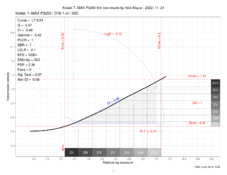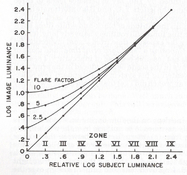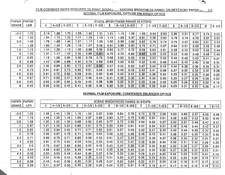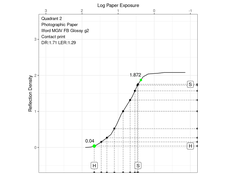@Stephen Benskin Thank you for the "What is Normal" article. I have previously implemented flare-adjusted CI from the Kodak table, I also implemented the variable flare-adjusted CI that is consistent, I think, with your paper. Here's a theoretical curve for the KODAK T-MAX P3200 with the LSLR of 2.13. I think you recommend using the value of 2.2. Mine comes from the "standard" seven-stop range that the BTZS system considers normal. It's not a huge difference. The "Aim CI" is flare-adjusted and is estimated at around 0.58, which I also think is consistent with your paper, isn't it?

I also wanted to ask your opinion on recalculating the film curves to include the effect of flare on negative density. The effect is going to be most pronounced in the shadows, and the correction does change the calculated parameters somewhat. From what I've read, this is not the orthodox way of doing it, but I did it, mainly because of BTZS. It's essentially an implementation of the "flare density" model from Phil Davis' book.


I also wanted to ask your opinion on recalculating the film curves to include the effect of flare on negative density. The effect is going to be most pronounced in the shadows, and the correction does change the calculated parameters somewhat. From what I've read, this is not the orthodox way of doing it, but I did it, mainly because of BTZS. It's essentially an implementation of the "flare density" model from Phil Davis' book.









